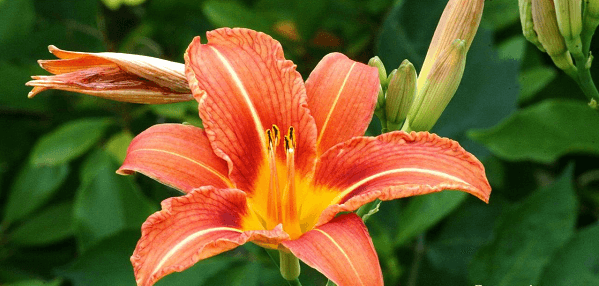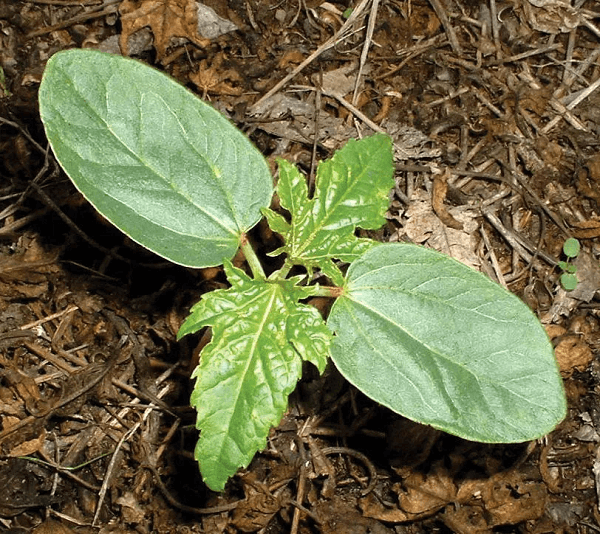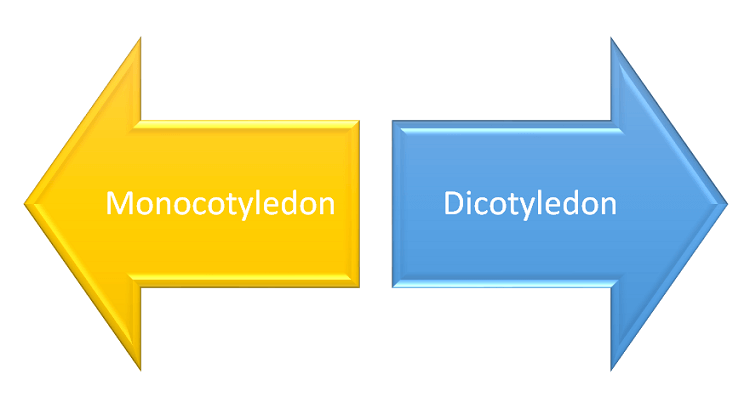Difference between Monocotyledon and Dicotyledon
When we talk about plants or seeds, the two terms monocotyledon and dicotyledon are very common and sometimes used interchangeably. However, they are not the same. There are significant differences between these terms, which we will discuss below in this article. Let us first understand each in detail:
What are Monocotyledons?
Monocotyledons, commonly known as monocots, are flowering plants characterized by their single embryonic leaf or cotyledon. They are one of the two main groups of angiosperms, the other being dicotyledons or dicots. Monocots are diverse in size, morphology, and ecology and play a crucial role in many ecosystems and human activities.

Some key features of monocots include parallel-veined leaves, flower parts in multiples of three, scattered vascular bundles in the stem, and a lack of secondary growth. The cotyledon of a monocotyledonous seed typically remains inside the seed and does not emerge above the soil surface as a green leaf, unlike in dicotyledons. Instead, the cotyledon nourishes the growing embryo until it develops its photosynthetic leaves and roots.
Monocots encompass more than 60,000 species that belong to over 70 plant families, including economically important plants such as cereals, grasses, palms, orchids, lilies, and aroids. These plants have numerous adaptations that allow them to thrive in various environments, from wetlands and deserts to alpine meadows and tropical forests.
One of the main ecological roles of monocots is as primary producers, meaning they convert solar energy into organic compounds that maintain food webs and nutrient cycles. For example, many cereal crops such as wheat, rice, maize, and barley are monocots providing a staple food source for billions worldwide. Other monocots, such as grasses and bamboo, are essential for grazing animals, soil erosion control, and carbon sequestration.
In addition to their ecological importance, monocots have significant cultural and aesthetic value. Many have been cultivated for thousands of years by different civilizations for food, medicine, clothing, and religious ceremonies. For instance, the coconut palm is an iconic symbol of tropical islands and a source of various products such as oil, fiber, and drink. The orchid family, which includes more than 25,000 species, is famous for its diverse and intricate flowers, liked by humans for their beauty and rarity.
Despite their economic and cultural significance, monocots face numerous threats from human activities, such as habitat destruction, overexploitation, pollution, and climate change. Many species are endangered or vulnerable, and their loss could have cascading effects on ecosystems and human well-being. Therefore, conserving and protecting monocots and their habitats is crucial through sustainable agriculture, protected areas, and public awareness.
Uses of Monocotyledon
- Food: Monocots are a significant source of food for humans and livestock. Some common examples of monocotyledons used as food include rice, wheat, corn, oats, barley, and sugarcane. These crops are staples in many diets worldwide and help produce food products such as bread, pasta, cereals, and sugar.
- Ornamental Plants: Many monocots are valued for their aesthetic appeal and are cultivated as ornamental plants. Some examples of ornamental monocots include lilies, orchids, and palms. These plants are used in landscaping, gardening, and as indoor plants, adding beauty and elegance to homes, offices, and public spaces.
- Medicinal Properties: Some monocots are known to possess medicinal properties and have been used for centuries to treat various ailments. For example, the leaves of Aloe vera, a monocotyledonous plant, are used in traditional medicine to soothe burns, wounds, and skin irritations. The bulb of garlic, another monocot, is believed to have antibiotic and antifungal properties, making it a popular home remedy for colds and flu.
- Textile Industry: Monocots are also used in the textile industry. For example, fibers from sisal leaves, a monocotyledonous plant, help make ropes, twine, and cordage. Fibers from agave leaves make a natural fiber called sisal, which produces rugs, carpets, and other textiles.
- Biofuels: Monocots are a potential source of biofuels, renewable energy sources derived from organic matter. For example, the stems of sugarcane, a monocotyledonous plant, can produce ethanol, a biofuel used to power vehicles and other machinery.
- Ecological Value: Monocots are also essential to the ecosystem. They play a crucial role in stabilizing soil, preventing erosion, and providing habitat for wildlife. Additionally, they are important in nutrient cycling and can help to regulate the climate by absorbing carbon dioxide from the atmosphere.
Top Countries with the Most Number of Monocotyledon Plants
- Brazil - Brazil is known for its diverse flora and fauna, with more than 55,000 plant species in the country. It is estimated that about 30% of the plant species found in Brazil are monocotyledons. Brazil is home to many species of orchids, palms, and grasses.
- Indonesia - Indonesia is the world's largest archipelago, with more than 17,000 islands. The country is known for its tropical rainforests, home to many unique plant species, including many monocotyledons. Some of Indonesia's most common monocotyledon plants are bamboo, palm trees, and bananas.
- Australia - Australia is known for its unique flora and fauna, with more than 25,000 plant species in the country. Approximately 20% of the plant species found in Australia are monocotyledons. Some of Australia's most common monocotyledon plants are lilies, orchids, and grasses.
- South Africa - South Africa is a biodiversity hotspot with over 20,000 plant species. Approximately 15% of the plant species found in South Africa are monocotyledons. Some of the most common monocotyledon plants found in South Africa are aloes, lilies, and grasses.
What are Dicotyledons?
Dicotyledons, also known as dicots, are a group of flowering plants characterized by the presence of two cotyledons, or seed leaves, in their embryonic stage. This group of plants is a major subdivision of the angiosperms or flowering plants and includes many familiar species, such as roses, sunflowers, and tomatoes.

Dicotyledons can be distinguished from monocotyledons, or monocots, by several features. In addition to two seed leaves, dicots typically have net-like veins on their leaves, flower parts in multiples of four or five, and a taproot system. Conversely, monocots usually have parallel veins on their leaves, flower parts in multiples of three, and a fibrous root system.
One of the defining features of dicots is their ability to produce secondary growth, which allows them to increase in diameter over time. This is accomplished through the activity of lateral meristems, which produce new cells in a layer called the cambium. As the cambium cells divide, they produce new xylem and phloem tissue responsible for transporting water, nutrients, and sugars throughout the plant. Over time, this process results in woody stems and trunks in many dicotyledonous species.
Dicotyledons are also known for their diversity of flower structures, contributing to their success as a group. Flowers of dicots can have a wide range of colors, shapes, and sizes and may be arranged in various patterns on the stem or branches. The flowers of dicots typically consist of four or five petals, which may be fused to form a tube or bell shape. The stamens, or male reproductive organs, are usually arranged in a ring around the center of the flower, while the pistil, or female reproductive organ, is located in the center.
Regarding ecology, dicots are key in many ecosystems as primary producers. They convert sunlight and carbon dioxide into organic matter through photosynthesis. Many dicotyledonous species have symbiotic relationships with other organisms, such as pollinators, herbivores, and mycorrhizal fungi. These relationships have allowed dicots to colonize various habitats, from forests and grasslands to wetlands and deserts.
Despite their many adaptations and successes, dicotyledons also go through many challenges. Habitat loss, climate change, invasive species, and other human-induced stressors threaten many of its species. In addition, some dicotyledons are considered invasive species and can cause significant ecological and economic damage in their non-native ranges.
Uses of Dicotyledon
- Food Production: Dicotyledons are an important food source for humans and animals. Many dicots, such as soybeans, beans, lentils, and peas, are cultivated as food crops. These plants are rich in protein, fiber, and other essential nutrients for human health. In addition to food crops, many dicots are used as forage crops for livestock, such as alfalfa, clover, and vetch.
- Medicinal Purposes: Many dicots contain compounds used in traditional medicine to treat various ailments. For example, the bark of the willow tree, a dicot, contains salicin, a natural pain reliever used to make aspirin. Another example is the ginseng plant, a dicot used in traditional Chinese medicine to improve cognitive function, boost energy levels, and reduce stress.
- Ornamental Purposes: Dicots are commonly used in landscaping and gardening as ornamental plants. Many dicots have attractive flowers and foliage, often used to create colorful and visually appealing displays in gardens and public spaces. Examples of dicots commonly used for ornamental purposes include roses, daisies, and sunflowers.
- Wood Production: Many dicots produce lumber and other wood products. For example, oak and maple trees, both dicots, are highly valued for their hard and durable wood used in furniture, flooring, and construction.
- Essential Oils: Some dicots produce essential oils used in aromatherapy, perfumes, and other fragrances. For example, the lavender plant, a dicot, is commonly used to produce essential oil, known for its calming and relaxing properties.
- Biofuels: Dicots are also used in the production of biofuels. For example, soybeans, a dicot, can be converted into biodiesel, a renewable and sustainable alternative to traditional diesel fuel.
- Soil Improvement: Dicots can also improve soil quality and fertility. Many dicots are nitrogen-fixing plants, meaning they can convert atmospheric nitrogen into a form available to plants. Examples of nitrogen-fixing dicots include beans, clover, and alfalfa.
Top Countries with the Most Number of Dicotyledon Plants
- Brazil - Brazil is also known for having many dicotyledon plants, with more than 25,000 species in the country. Brazil is home to many species of legumes, coffee, and citrus fruits.
- China - China is one of the most diverse ecosystems, including tropical rainforests, deserts, and mountains. It is estimated that China has more than 20,000 dicotyledon plant species, including many species of roses, peonies, and magnolias.
- United States - The United States contains more than 17,000 dicotyledon plant species, making it one of the most biodiverse countries in the world. Some of the most common dicotyledon plants in the United States are sunflowers, roses, and tomatoes.
- Mexico - Mexico is known for its rich biodiversity, with more than 26,000 plant species in the country. Approximately 16,000 of these species are dicotyledons. Cacti, beans, and squash are some of the most common dicotyledon plants found in Mexico.
Difference Between Monocotyledons and Dicotyledons

Monocotyledon and dicotyledon refer to the two distinct main classes of flowering plants, also known as angiosperms. These two terms represent the number of embryonic leaves or cotyledons produced by the plant's seed. Monocotyledons, or monocots, produce a single cotyledon, while dicotyledons, or dicots, produce two. This key difference between the two classes of plants has many implications for their growth, development, and morphology.
Let us now determine the notable differences between monocotyledon and dicotyledon with the help of the following table:
| Attributes |
Monocotyledon |
Dicotyledon |
| Leaf Venation |
Monocots typically have long, narrow leaves with parallel veins. They rely on a network of parallel veins to move water and nutrients from the roots to the leaves. |
Dicots have broader, more complex leaves with branching veins. They have a more intricate system of veins that allows for greater efficiency in nutrient transport. |
| Roots |
Monocots typically have fibrous, shallow root systems spread horizontally below the soil's surface. This allows them to absorb nutrients and water quickly from a wide area. |
Conversely, dicots have a taproot system in which a single large root grows vertically into the ground, providing greater stability and access to deeper sources of water and nutrients. |
| Flower Parts |
Monocots typically produce flowers in multiples of three. |
Dicots produce flowers in multiples of four or five. This difference in flower structure reflects the different ways in which these plants attract pollinators. |
| Type Of Pollination |
Monocots typically rely on wind pollination. |
Dicots rely on insect pollination. |
| Seed Structure |
Monocots produce seeds with a single cotyledon, an energy source for the developing plant. |
Dicots produce seeds with two cotyledons, which provide even more energy and nutrients for the developing plant. This difference in seed structure can significantly affect how these plants grow and develop. |
| Physical Structure |
Monocots grow more slowly than dicots and are often smaller in size. They also tend to have simpler overall structures, with fewer branches and less complex leaf arrangements. |
Dicots, on the other hand, tend to grow more quickly and are often larger. They also tend to have more complex overall structures, with more branching and complex leaf arrangements. |
| Seed |
Monocotyledons have one seed leaf (cotyledon) in their seed space. |
Dicotyledons have two seed leaves. |
| Stem |
Monocotyledons have a scattered vascular bundle in their stem. |
Dicotyledons have a ring-like arrangement of vascular bundles. |
| Embryo |
In monocotyledons, the embryo is located at one end of the seed. |
In dicotyledons, the embryo is located between the two cotyledons. |
| Pollen |
Monocotyledons have a single furrow or pore in their pollen grain. |
Dicotyledons have three furrows or pores. |
| Cotyledon nutrition |
Monocotyledons have thin and strap-like cotyledons that do not store nutrients. |
Dicotyledons have thick cotyledons that store nutrients for the developing embryo. |
| Examples |
Examples of monocots include maize (corn), wheat, rice, sugarcane, onions, garlic, lilies, etc. |
Examples of dicots include beans, peas, peanuts, sunflowers, roses, daisies, oak trees, etc. |
Conclusion
In conclusion, this article, with the difference table between monocotyledons and dicotyledons, discusses significant features or characteristics to understand the unique characteristics of these two groups of plants, namely monocotyledons and dicotyledons. By understanding the differences, we can better classify and identify plants and develop more effective agricultural and horticultural practices. Whether you are a botany student or a nature enthusiast, the difference table of monocotyledons and dicotyledons is an important resource for exploring the rich diversity of the plant kingdom with ease.
|



 For Videos Join Our Youtube Channel: Join Now
For Videos Join Our Youtube Channel: Join Now










